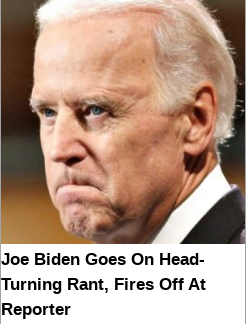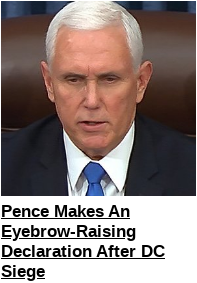Polls, Clickbait, and Commemorative $2 Bills:
Problematic Political Advertising on News and Media Websites Around the
2020 U.S. Elections
Eric Zeng, Miranda Wei, Theo Gregersen, Tadayoshi Kohno, Franziska Roesner
This paper appears at the 2021 Internet Measurement Conference (IMC 2021).
Overview
The 2020 U.S. Elections were one of the most important and contentious elections in recent history. Spending on online political advertising broke records during this election cycle, with over $200 million being spent by both the Biden and Trump campaigns.
In this paper, we investigated the following research questions about online political advertising:
- What was the extent of online political ads on news websites during the 2020 U.S. Elections?
- What kinds of misleading or manipulative content did online political ads contain?
We collected data on online political ads from September 25th, 2020 to January 19th, 2021 using web crawlers. We conducted daily crawls on 745 online news and media websites, including both mainstream news outlets and websites labeled by fact checkers as "misinformation". Using VPNs, we performed these crawls in six locations across the U.S.:
- Seattle, WA
- Salt Lake City, UT
- Miami, FL
- Raleign, NC
- Phoenix, AZ
- Atlanta, GA
Key Findings
Using Politics for Profit
Certain online ads used inflammatory political content as a means of attracting attention and clicks, sometimes using deceptive techniques. However, the true purpose of these ads were to ultimately to earn a profit, either by selling products, harvesting personal information like email addresses, or earning revenue through ads on the landing page.
Misleading Political Polls


Democratic Strategy Institute / rightwing.org
One example of problematic political ads we observed were misleading political polls or petitions. Though they looked like polls or petitions that urged you to vote on a political issue, their purpose wasn't actually to measure public opinion. Instead, submitting a vote almost always required giving an email address that be used to subscribe you to mailing lists. Such lists ask for campaign donations, advertise questionable products, and in some cases, spread political misinformation.
Political Product Ads


Proud Patriots / Legacy Research
Political content was also used in advertisements for tangible products. Some ads for political memorabilia used classic bait-and-switch tactics like "free" products... if you pay for shipping and handling. Other ads used political figures and events to attract attention for their products, like ads promising get-rich-quick investments.
Clickbait Political News Ads



Zergnet
Many news websites will run "native ads", which imitate the look and feel of native links to news articles on their site, but are in fact ads for articles on third party websites. (See our previous work investigating native ads). These ads are often written with "clickbait" headlines.
We observed many examples of native ads with political content, which often used sensationalist headlines to imply outrage and controversy about politicians. However, their landing pages were almost always less shocking and outrageous than the headlines typically claimed.
Political Ads are Targeted at Partisan Websites
Political ads appeared more frequently on websites with a higher level of partisan bias. Using data from AllSides and Media Bias/Fact Check, we categorized the political bias of the sites we crawled, as Left, Lean Left, center, Lean Right, and Right.
Our data shows that significantly more political ads appeared on sites categorized as Left and Right, compared to Lean Left and Lean Right, as well as centrist and uncategorized sites.
Looking specifically at campaign ads, political advertisers also tend to target sites matching their affiliation: Democratic and liberal groups ran most of their ads on left-leaning sites, while Republican and conservative groups ran most of their ads on right-leaning sites. For example, a large number of ads on Daily Kos and Occupy Democrats (classified as Left, Misinformation by Allsides and Media Bias/Fact Check) were from Democratic affiliated advertisers.
We also observe this effect for the types of problematic ads we found above, such as political polls and political products. For example, misleading political polls appeared more on right leaning sites than other sites:
| Political Lean | % of Ads that are Political Polls and Petitions |
|---|---|
| Right | 2.2% |
| Lean Right | 1.1% |
| Center | 0.2% |
| Lean Left | 0.2% |
| Left | 1.1% |
These results suggest that political ads are contextually targeted at partisan political news outlets, meaning that people who read from these sources are more likely to be exposed to political advertising, including misleading, outrage-provoking, and potentially harmful political ads.
Dataset
Download Dataset (220MB)Our dataset of 1.4 million political and non-political ads is available at the link above. This dataset contains the following information:
- Transcribed text of each ad (using OCR)
- Metadata for each ad, including the URL of the parent and landing pages
- Content labels for politcal ads, including
- Category of ad (campaigns and advocacy, political products, political news)
- For campaign ads: advertiser affiliation, organization type, purpose of ad
You can also browse the dataset in our Ad Archive.
About
This project was a collaborative effort of Eric Zeng, Miranda Wei, Theo Gregersen, Tadayoshi Kohno, and Franziska Roesner.
This work was supported in part by the National Science Foundation under grant CNS-2041894, the UW Center for an Informed Public, and the John S. and James L. Knight Foundation.
Read More
More research on problematic online advertising from our lab:-
What Makes a "Bad" Ad? User Perceptions of Problematic Online Advertising
[ Dataset Visualization ] - Bad News: Clickbait and Deceptive Ads on News and Misinformation Websites

